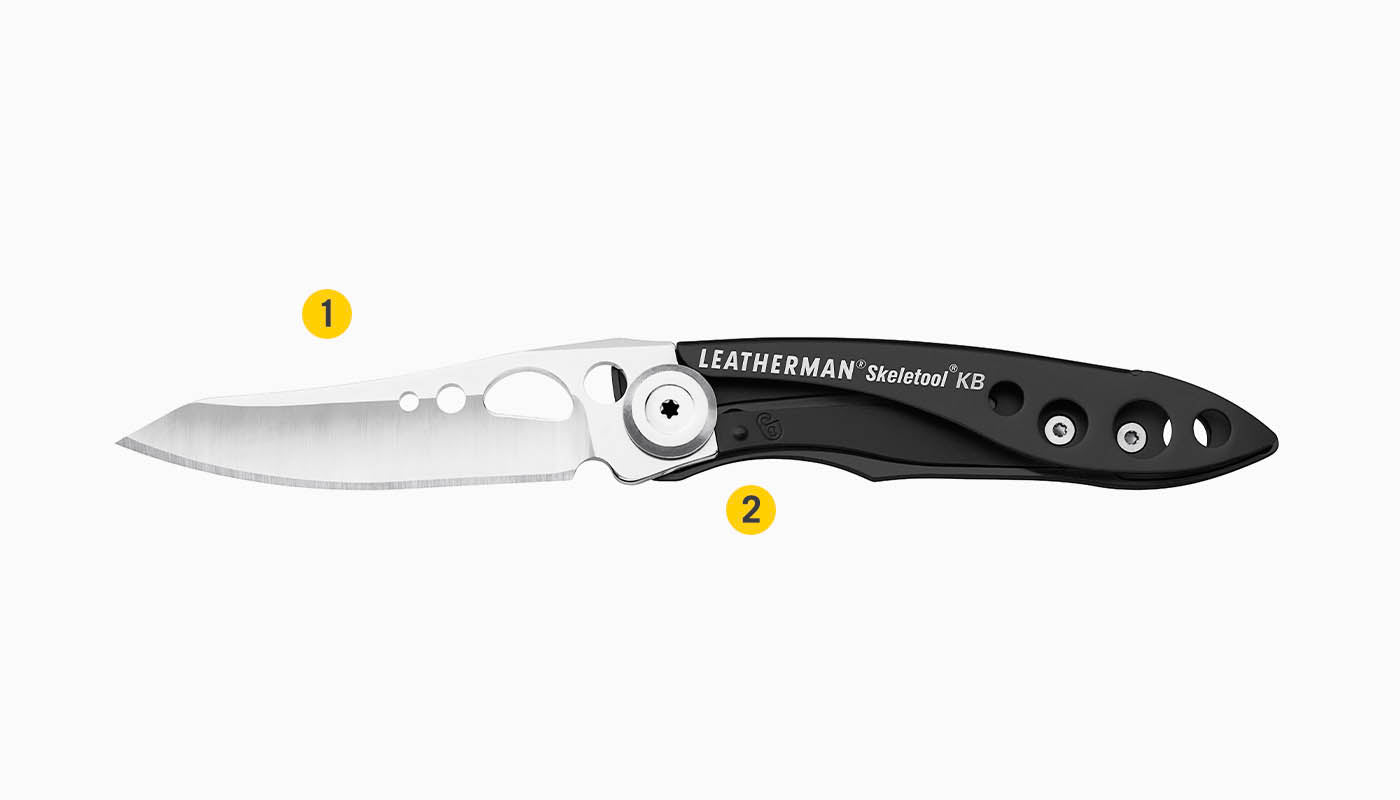Leatherman Skeletool KB OD Green knife (833161) - 2 tools
LEATHERMAN SKELETOOL KB:
Lightweight and compact pocket knife weighing just 37 g. Leatherman Skeletool KB is a minimalist tool that is perfect for everyday use - always at hand when you need it.Leatherman Skeletool KB is an extremely lightweight pocket knife designed for users who value simplicity, functionality and reliability. It only weighs 37 g, so you can always have it with you - in your pocket, backpack or on your belt.
Main features:
High-quality 420HC steel provides durability and corrosion resistance,
Ergonomic handle made of anodized 6061-T6 aluminum, it is lightweight and durable,
Bottle opener built into the clip adds practicality for everyday use,
Simple and quick operation makes the knife perfect for hiking as well as at work or home.
The minimalist design of the Skeletool KB proves that less is more - it's an essential part of any EDC (Every Day Carry) kit.
Specifications:Weight: 1.3 oz (36.85 g)
Length when folded: 3.45 in (8.76 cm)
Length when unfolded: 5.87 in (14.91 cm)
Main blade length: 2.6 in (6.6 cm)
Width: 0.8 in (2.03 cm)
Overall thickness: 0.3 in (0.76 cm)
Materials:
420HC stainless steel
6061-T6 anodized aluminum
DLC coating
- Materials420HC stainless steel, 6061-T6 hard anodized aluminum, DLC coating
- Blade length
- Blade material420HC stainless steel
- Blade lockYes
- Handle material420 Stainless Steel
- Frame material420 stainless steel
- Frame colorBlack
- Frame finishCerakote®
- Handle materialAluminum
- Scale colorBlack
- Finishing the rockCerakote®
- Fastener materialStainless steel
- Color of fastenersBlack
- Finishing of fastenersBlack oxidation

Tools included
- 420HC blade
- Bottle opener
Be careful when using, the tool may have sharp edges, risk of injury. Use with protective gloves, store in a safe place. Keep away from children. Dispose of used product according to local regulations.
List of knife safety warnings based on requirements
Regulation (EU) 2023/988 on general product safety
(GPSR):
* Risk of injury: Use the knife carefully and always hold it by the handle. The blade is
very sharp and can cause serious cuts. Don't try to catch a falling
knife.
* Safe storage: the knife should be stored in a safe
place, out of reach of children and unauthorized persons. Use a blade guard if
is available.
* Use as intended: Do not use the knife for purposes for which it is not
intended, for example, for opening cans or loosening screws. This can lead to
knife damage or injury.
* Caution when cleaning: Use caution when cleaning the knife,
to avoid cuts. Do not use aggressive cleaning agents that can
damage the blade.
* Blade maintenance: Sharpen the blades regularly to keep them in good condition. Blunt
knives are more dangerous than sharp ones because they require more force, which
increases the risk of slipping.
* Transporting the knife: When transporting the knife, make sure the blade is secured,
for example, by using a vagina or sheath. This prevents accidental injuries.
* Keep your knife clean: Clean the knife regularly to remove any food debris
or other contaminants. This ensures safe and hygienic use.
* Do not modify the knife: Do not try to modify the knife or repair it yourself,
if you don't have the right skills. This can lead to damage to the knife
or injuries.
* Warning for children: knives are intended for adults only. Do not allow
children to use knives without supervision.
* Disposal: Dispose of used or damaged knives in a safe manner to
prevent accidental cuts.
This product is for adults only, who have knowledge and experience in handling sharp cutting tools. Improper use of the knife can lead to serious injury. The blade of the knife is very sharp and can quickly cut through skin and tissues; so always be very careful when slicing and do not bring your hand close to the cutting edge. To avoid slipping of the knife, it is recommended to cut on a stable and non-slip surface and avoid excessive pressure, which can cause uncontrolled movement of the blade.
Be aware that leaving a knife on the edge of a table, countertop or in easy-to-reach places, especially for children, is a danger. The knife should always be properly secured after finishing work, preferably by putting it down on a stable surface or storing it in specially designed blocks, sheaths or on magnetic strips. Never use a knife for tasks for which it is not intended, such as opening cans or using it as a lever, as this risks both damage to the tool and dangerous accidents.
Blunt blades pose an increased risk of injury because they require more force and tend to slip off the material being cut. Therefore, care should be taken to sharpen the knife regularly to maintain optimal sharpness. It is also necessary to clean and dry the tool regularly to prevent corrosion and bacterial growth. It is recommended to periodically inspect the condition of the handle and blade to detect any cracks, chipping or loosening. If damage is found, the knife should be immediately repaired or replaced with a new copy.
When using the knife, focus solely on the task at hand, avoid talking on the phone or watching TV while slicing, and make sure your work area is well-lit. You are reminded that in some countries or regions there are laws restricting the possession and carrying of knives. Before buying or using a knife, it's a good idea to make sure that using it in your location is allowed under the current law.
Adherence to the above rules will enable safe and efficient use of the knife, minimizing the risk of accidents and ensuring the long life of the tool.























